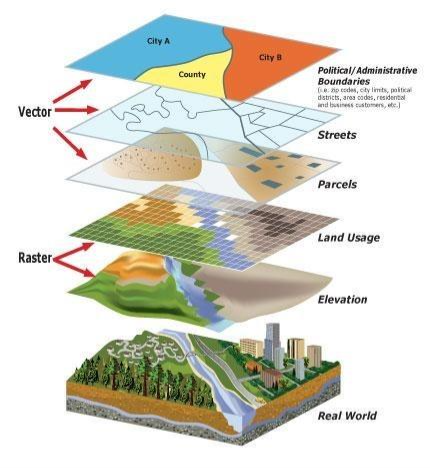Wasted time and resources due to CAD inefficiencies are a hidden drain, and the problem is only getting worse. Technical inconsistencies within CAD processes create multiple roadblocks, inconsistent CAD workflows, repetitive tasks, reliance on expensive custom components, and outdated standards tank productivity ratings.
To optimize workflows, teams should invest in targeted CAD strategies that address their specific needs, which could include CAD training, support, or automation solutions when appropriate.
Implementing the right approach can improve project accuracy, hasten design cycles, and eliminate unnecessary revisions. You just need the right systems and practices.
In this article, we’ll discuss similar CAD best practices that you can use to reduce errors, offload redundant processes, and manage CAD models.
1. Follow a Consistent Use of Standards
The lack of CAD software standards leads to inconsistent outputs, increased error rates, and multiple rounds of rework. For AEC and manufacturing leaders, discrepancies could become harder to control as the team grows. Ensuring design consistency between two individuals differs starkly from maintaining output quality across two dozen individuals.
To achieve consistent models and minimize design revisions, companies should follow these CAD best practices:
-
Analyze existing workflows to pinpoint areas where standardization is most needed. Look for bottlenecks that often yield suboptimal results. Investigate the root causes of these bottlenecks and understand the challenges in team collaboration during projects.
-
Define relevant industry standards that apply to your processes. AEC and manufacturing companies should establish clear guidelines for title blocks, including project naming conventions and revision process outline.
-
Create custom templates and configurations to embed these standards directly within your CAD software. They’ll provide a consistent starting point for all new projects.
2. Reduce Unnecessary or Redundant Steps with Automation
Updating title blocks, generating reports, or transferring data between different software tools are essential but time-consuming. These tasks divert focus from core design and fabrication activities. Recent reports show that employees waste two hours a day organizing the files and documents they need for core responsibilities.
To free up valuable time, invest in automation solutions tailored to your workflow. Within Autodesk® software environments, for example, tools like Inventor iLogic, LISP, or .Net APIs can automate various tasks within the drafting environment, including:
-
Merging AutoCAD® data with spreadsheets
-
Performing batch operations across multiple drawings
-
Dynamically resizing components based on predefined rules
-
Generating intelligent Bills of Materials (BOMs) that auto-update when designs change
-
Seamlessly integrating CAD data with enterprise database systems
For optimal results, develop custom programs that automate multi-step processes across different Autodesk® products or external systems.
3. Optimize Your Design or Manufacturing Processes
Many AEC companies and manufacturers persistently rely on long-established practices without reassessments. This oversight can render their processes obsolete and misaligned with the industry standards. Outdated SOPs and legacy systems can cause companies to gradually lag behind competitors.
Here’s an efficient way to optimize routine processes for design and manufacturing. Although the details might vary, they generally apply to most AEC and manufacturing companies:
-
Data Gathering: Engage stakeholders across departments to detail existing workflows, software tools, product lines, and data management strategies.
-
Process Review: Analyze processes to pinpoint bottlenecks such as repetitive data entry, compatibility issues, or version control problems.
-
Software Assessment: Examine CAD software usage for outdated features, inefficient customizations, or opportunities to utilize new capabilities.
-
Analysis and Recommendations: Develop actionable recommendations such as those aimed at streamlining workflows, upgrading software, or enhancing data management practices.
If routine assessments interfere with core processes, consider partnering with full-service solutions providers that specialize in optimizing workflows for AEC and manufacturing companies.
4. Train Your Staff
CAD software, even with its sophisticated capabilities, offers limited value without skilled users. Insufficient training often leads to project delays, underutilizing advanced features, and inefficient workflows. Merely maintaining these costly drafting and design tools thus escalates overhead expenses.
Alternatively, thorough training empowers design and fabrication teams to fully leverage CAD tools, which enables them to contribute more effectively to your company’s success. To maximize your training, assess skill gaps and identify areas where focused CAD best practices could alleviate bottlenecks and streamline collaboration. Consider a phased approach when introducing new technologies to acclimate your team and prevent overload gradually.
5. Manage Your Files
Issues such as broken links, missing CAD models, and uncontrolled as-built designs can cause project delays, rework, and miscommunication within your team. Inefficient file management significantly impedes productivity.
To address these challenges, integrating a robust engineering document management system (EDM) into your existing drafting processes is essential. Such integration not only streamlines file management but also complements the capabilities of PDM (Product Data Management).
Selecting the right EDM solution, whether on-premise or SaaS-based, is critical for enhancing these processes. This selection requires careful analysis of your needs. Consider these key factors:
-
Scalability: Ensure the EDM can handle your company’s expanding data volume and users.
-
Security: Protect sensitive project data with robust access controls.
-
Integration: Choose a solution compatible with your existing CAD or ERP, among other PDM software.
-
Customization: See if you can integrate your EDM into your design and manufacturing workflow.
How Hagerman Can Help You Employ Better CAD Best Practices
While specialized AI and CAD tools offer significant potential, success depends on tailored implementation and effective utilization. Generic systems designed without your specific industry needs in mind can inadvertently hinder efficiency.
To truly transform your CAD workflow, partner with the full-service specialists at Hagerman & Company. Whether you need engineering document management, CAD design automation, or Autodesk® software training, we have you covered. See how our innovative solutions can streamline your daily operations.

![CampaignBrief_HagermanStateofDesign&Make_TOFU_A_111423-[2024]-2480x1395](https://no-cache.hubspot.com/cta/default/2059166/interactive-167421451831.png)



Comments